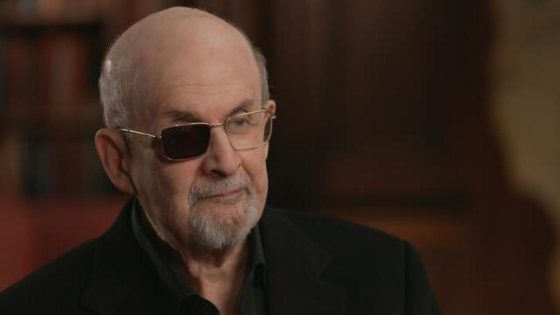“The Antisocial Network: Memes to Mayhem” is a documentary about 4Chan, the popular imageboard website that became the Petri dish in which QAnon — the mother of all crackpot conspiracy theories — came into being. The story of 4Chan makes for a fascinating chapter in the evolution of Internet culture. But chances are we wouldn’t be seeing a documentary about it that drops today on Netflix if the 4Chan saga hadn’t culminated in the arrival of QAnon. Given the significance of QAnon (i.e., the fact that half the country now thinks batshit psychotic fantasy scenarios are the essence of reality), you’d think that when the movie arrived at its creation, it would feel like you were entering the last circle of the heart of darkness.
But no. Ironically, the genesis of QAnon is the lightest and most amusing part of “The Antisocial Network.” That’s not because QAnon itself has been anything less than disastrous in the wreckage it has caused this country. Of all the things that account for the stubborn popularity of Donald Trump, the fact that so many of his supporters are QAnon heads, believers in the idea that they’re fighting a Satanic cult of pedophiles who have the support and protection of the Democratic Party, is no minor factor. There have been good documentaries that trace the QAnon phenomenon (like “After Truth: Disinformation and the Cost of Fake News,” in which we got to see dash-cam footage of Edgar Maddison Welch, the assault-rifle-toting Pizzagate “avenger,” on the way to his mission), and the baroque paranoid beliefs of QAnon followers have been amply chronicled.
But “The Antisocial Network” takes us back to before all that, to what QAnon actually was: a goof. Nothing more, nothing less. Pizzagate, which was the origin story of the QAnon concept of a pedophile cabal, was spread with a chuckle by 4Chan users and was based on the interpretation of bizarre codes (like the idea that cheese pizza, with the initials CP, stood for “child pornography”). And once the mysterious entity known as Q entered the picture, and began to spread his gnomic bread crumbs about sinister government actions, the programmers of 4Chan whipped up interest in it, because that had always been their reason to exist: to fan the flames of transgressive mishegas, the weirder and wilder the better, and to make it all go viral. That’s what got them high.
One of the things that lent Q credibility is that he would tweet out a message, and 10 minutes later it would be echoed in a Trump tweet. How could that happen? The documentary reveals how: The Q tweet was actually done after the Trump tweet, and simply mimicked it — but the timecode on the tweet was altered, to make it look like Trump was taking his cues from Q. That’s called basic deepfake Internet flimflam. But it worked. It fooled people. The 4Chan programmers got their viral sensation and their jollies.
What no one in their right mind could have predicted is that huge swaths of the country would start to take this stuff more seriously than a report in The New York Times. That they did was, on some level, a bad joke, even if it’s now a joke that threatens to trash America. QAnon is a cult, but part of the freakish nature of it is that it’s a cult that came into being by accident. There was no mastermind at its center; Q barked out his pronouncements, but was no more real than the Wizard of Oz. That’s what makes QAnon the pyramid scheme of conspiracy theories: a sinister “plot” that consists of nothing so much as each and every one of its followers holding up his or her small sliver of the belief system. QAnon’s virality is its only reality.
So how did we get here? “The Antisocial Network” traces how 4Chan, over the last 20 years, pioneered an online universe where outrageous satires, “Jackass” stunts, and a free-floating impotent political rage could fuse into an “outlaw” stance of permanent rebellion. The site’s model was 2Chan, the Japanese site of the early 2000s that most Japanese citizens accessed on their cell phones, which didn’t have much bandwidth. That was part of what gave rise to the emoji, and to the idea of a bulletin board grounded in anonymity.
A user named “moot” downloaded a copy of 2Chan’s software and, in October 2003, launched an English version called 4Chan. It was jammed with cartoons, videos, and what would come to be known as memes. A point I’m surprised the documentary doesn’t make is that it was, in essence, the early version of TikTok. It was catchy, extreme, blasphemous, at times reactionary stuff, driven by a Darwinian spirit: The most outlandish posts got the most clicks. The first official 4Chan panel took place in 2005 at Otakon, an anime convention in Baltimore, and it there that “moot” made his public debut. He turned out to be a grinning kid named Christopher Poole who looked like Matt Damon at 15. From the start, he had a Zuckerbergian aura. He wanted 4Chan to be the Facebook of bro anarchy.
That’s more or less what it was, until a handful of 4Chan voices merged themselves into the insurgent collective known as Anonymous. Their goal was to “speak truth to power,” which they did by spreading the meme of the Guy Fawkes mask from “V for Vendetta,” encouraging 4Chan followers to wear the masks at public protests. Anonymous attacked Scientology and did “raids,” like trolling the neo-Nazi radio host Hal Turner. The culmination of 4Chan’s social activism was its involvement in Occupy Wall Street. This was The 4Chan That Cared.
The trouble is, it’s tricky to be caring one day and making jokes about AIDS the next. Everything 4Chan did was ultimately for show, and its representatives who appear in the movie, like the placid hippie Fuxnet or the angry Kitaner, have some regrets but aren’t exactly fountains of self-awareness. They seem to have no idea that one of the worst things they did was to help transform “activism” into a form of virtue-signaling.
I’m not entirely sure the documentary understands that either. Yet as directed by Giorgio Angelini and Arthur Jones, with plenty of virtual image-blitz montages, “The Antisocial Network” is a lively lesson in digital history, one that leaves you with the disquieting feeling that some of the most influential outgrowths of Internet culture, like QAnon, were essentially flukes. On the other hand, maybe there was a perverse design to it. The hackers and programmers of 4Chan were out for kicks. They wanted eyeballs and would do anything to get them. QAnon brainwashed the nation, but in its way it was the fulfillment of that dream. It got America addicted to demented conspiracy theory because demented conspiracy theory is more entertaining than reality.
Source Agencies




